Episode 13: Board Meetings | Top 3 Mistakes We See Being Made
As we've taken our "Boulder Better" workshops to gyms across the country, we've been able to watch and work with climbers of all shapes, sizes, abilities, and attitudes. We've seen lots of cool, positive things happen, but we've also seen lots of mistakes being made. In this episode, Nate and I sit down after drinking a pot of coffee and a bottle of wine, and discuss each other's list of the "Top 3 Mistakes We See Being Made." And yes, we now know that the platypus is not the only venomous mammal.
I've mentioned this on the podcast a number of times, but one of the mistakes I've seen in my own climbing is that I tried to "relax" my way through hard moves, rather than even understand how to try really hard. I've been working hard on it. Join us on our Facebook Page to let us know what mistakes you've noticed in your own climbing!
Like what you hear? Subscribe to The Power Company Podcast on ITunes, Google Play, or Stitcher Radio, and leave a rating and review!
FULL EPISODE TRANSCRIPT:
Kris Hampton 00:31
What's up everybody? I am your host Kris Hampton.
Nate Drolet 00:36
And this is Nathan Drolet.
Kris Hampton 00:37
And together we form platypus. Yeah, that sounds right. Platypus
Nate Drolet 00:43
The only poisonous mammal?
Kris Hampton 00:44
Really?
Nate Drolet 00:45
Yeah. Quills. They also lay eggs. Duck puppies.
Kris Hampton 00:51
What are you talking about? They have. They lay eggs. They have quills.
Nate Drolet 00:58
Yeah.
Kris Hampton 00:58
Platypuses have quills?
Nate Drolet 01:00
Yeah, they have poisonous quills. They're the only poisonous mammal. That's your fact for the day.
Kris Hampton 01:04
Why aren't they called Porcupus?
Nate Drolet 01:08
I don't know.
Kris Hampton 01:10
Wow. We at the power company. We'd like to retract any inflammatory or insensitive statements toward the platypus or any mammal who identifies as a duck puppy. Upon further googling. Our fact checking department, aka Nate has concluded that we in fact, are not experts on the platypus and would like to defer to someone who is
recording 01:36
90 seconds naturalist.
Thayne Maynard 01:40
Hi, there I'm Thayne Maynard with the bill and webbed toes of a duck the tail is a beaver and the body of an otter. platypuses are easily one of the strangest looking animals on the planet, and they even lay eggs like a bird as the only living member of its taxonomic family and genus. The platypus is a unique animal that lives throughout Tasmania and the eastern coast of Australia. Duck billed platypuses are generally solitary animals, especially the males, which set up territories in rivers, lagoons and streams. The different home ranges of males may overlap, but the animals try to avoid each other, possibly even changing their foraging schedule. To do so. The females are more tolerant and may even choose to nest in the same burrow with other females. But the mammals have a competitive nature that picks up during the breeding season, and the females can then nip each other in the tail with their toothless bill to get them out of their area. during the breeding season, the male's produce venom which is secreted from the Spurs on their hind legs, and used to inflict painful injuries on rival males. After the female has decided to accept her potential mate, she will allow him to bite her on her tail, and she will respond by biting his tail.
recording 02:51
The 92 second naturalist is a production of Cincinnati public radio and the Cincinnati Zoo with support from Cincinnati Public Radio members to spread the good Nnws of the natural world.
Kris Hampton 03:03
I'm learning things here, folks, I'm learning things here. So I just want to go on record as saying that this is our second board meeting for the night. And we went through an entire bottle of wine between the two. So it was all coffee, up until the first one and now we're a bottle of wine in. So this is a board meeting the the board meeting is officially in session. Session, like the way that sounds All right. What we're going to talk about here is Nate and I have been on the road for a little while. And we've been doing these workshops that have been going really great. The Boulder Better workshops. So when they come to your city, you should definitely show up. We've got a lot to learn from you. And you've got a lot to learn from us, frankly. And that's what we're going to talk about today, the three top things that we've seen that the mistakes that people are making the top three mistakes people are making, that we see.
Nate Drolet 04:13
Consistently.
Kris Hampton 04:14
I've had far too much wine. Thanks to Nate he bought wine. Paul would be ashamed that you didn't buy good beer.
Nate Drolet 04:20
I know, which if anyone hasn't checked it out. Paul Corsaro has Bullet points and Brews that he posts roughly every Friday, roughly. It's really good. He does a great job of finding great articles that are written from strengthen conditioning and just general all over the internet from the week and as well as his review of a great beer.
Kris Hampton 04:43
Yeah, and Pau; loves his beer. Yeah, yeah, I like drinking beer with Paul. So more that this fall and winter for sure. Okay, so let's get into this thing. Before we just keep rambling and being drunk. I'm gonna let you start cuz you started on the first one, so we're just gonna keep that trend going, you're gonna talk about what topic we're on. I already did. You're behind.
Nate Drolet 05:08
Okay. So the top three things that we've each seen, that people could improve on. My first one is that people should focus more on how stereotypes are really are there for a reason. And this is something I'm terribly guilty of. So a couple examples, obviously, if you're a big strong guy, and you just always naturally jump and power through things. You know, it's pretty obvious that you need to focus on technique, being able to move slower, being able to climb more delicate things like that. And same thing, I mean, to pick on myself, um, before I climbed, I was a cross country runner. I was, I started high school at 89 pounds. So small...
Kris Hampton 05:53
I wrestled 98 my freshman year.
Nate Drolet 05:58
Had to weigh in with a roll of quarters in your pocket.
Kris Hampton 06:01
Exactly.
Nate Drolet 06:02
Uh, so yeah, I was naturally a small guy before I started climbing even now, I've never considered I've never been a terribly powerful climber. Yeah, and a lot of people are that way. I mean, you know, we'll run into tall, slender women who just want to keep getting stronger fingers and keep climbing statically
Kris Hampton 06:25
Yeah, thing is more twisting.
Nate Drolet 06:27
Yes. Yeah. Yeah. I mean, stereotypes are there for a reason. If you're. Yeah, you know, if you have a running background, you probably need power. If you're powerful. You need to be more technical things like that.
Kris Hampton 06:41
Sure. I agree. 100%.
Nate Drolet 06:43
Yeah, I'd say. Yeah. And same thing goes for. If you're a sport climber, you could probably use some bouldering.
Kris Hampton 06:51
100%. Yes. Again, definately.
Nate Drolet 06:54
If you're, if you're a trad climber you probably climb really slow. Yes.
Kris Hampton 06:57
Slow and sloth like? Like I think I do.
Nate Drolet 07:02
The biggest thing I'd say that I've noticed is, along with stereotypes, and this goes hand in hand, most people know what they need to work on.
Kris Hampton 07:11
Yeah. And they avoid it.
Nate Drolet 07:12
Yes. Like it. It's funny, you know, I'll watch someone climb. I'll be like, man, you know, you really powerful. You're good at jumping. But you should try and spend more time keeping your feet on.
Kris Hampton 07:24
I know. But...
Nate Drolet 07:25
Exactly. That's what happens. Yeah. Or, you know, everyone tells me that. And those are really common. You know, I hear that all the time. It's like, well, if everyone's saying the exact same thing to you, maybe it's for a reason.
Kris Hampton 07:39
Exactly. Yeah, I like that stereotypes are there for a reason. Yeah, so that's my number one. My number one is, people don't warm up enough. Like, not even close. And, and I'm guilty of this a lot of times. And then there are other times I think I warm up too long. But people don't warm up enough. I think they're like, especially and I'm gonna totally stereotype here, but especially the people who are not climbing at a super high level. I think if you know, especially the people who are climbing like around the 5.10 level, have a tendency to start to jump into the into that 5.10 grade too quickly. And, and I think that you should stay pretty well below what your limit is for quite a while for maybe at least 30 minutes of your warmup.
Nate Drolet 08:47
So if you're out at the crag how many pitches would that be?
Kris Hampton 08:50
Oh, man, I would say...
Nate Drolet 08:51
I mean, obviously, there's no one size fits all.
Kris Hampton 08:53
Yeah, for sure. I would say you need to do at least if you're out at the crag, you need to do at least three, maybe four warm up pitches before you even start approaching your hardest grades. And...
Nate Drolet 09:10
So what could that could be comprised of? So for instance, do they all need to be things that you've done before?
Kris Hampton 09:17
No, not necessarily. I think you can. I think you should definitely do some things that that make you confident that increase your confidence and get you mentally ready. And then I think you need to do some things that challenge you specifically if you're you know, it really depends on what your what your weaknesses are, what you need to work on or, or what your project consists of that day. So if you know that your issue your biggest issue is you know, your the mental side of your climbing the maybe your warmup should be an easier onsight. Something you haven't done but that's well within your limit. To get you ready to get your brain ready. Get your mind ready to...
Nate Drolet 10:00
Kind of build that confidence.
Kris Hampton 10:01
Right to get your psyche ready for something harder. If if you're a naturally slow climber, maybe you need to warm up on something that, that you purposely climb much faster than your normal pace. You know, I think you need to push yourself outside of your limits are outside of your, your comfort zone. Excuse me here because I had a lot of wine at this point. But yeah, push yourself outside of your comfort zone and your warm ups, it doesn't mean it should all be really easy for you. That's not what a warm up is a warm up is specific specifically to warm you up for whatever your ultimate task is for the day. And if you're not warming up for that, if you're just warming up going through the motions, then you're probably not getting there. I think that's the most frustrating. My number one most frustrating thing that I see,
Nate Drolet 10:59
For sure. I think, Do you feel like you see it more with boulders or for sport climbing?
Kris Hampton 11:04
Ooh, that's a good question.
Nate Drolet 11:06
I know. I feel like I see it more with sport climbing.
Kris Hampton 11:09
Really, I was gonna say more for boulders.
Nate Drolet 11:11
Well we're different people.
Kris Hampton 11:12
And maybe maybe I'm thinking more for boulders? Because we've just done all these workshops that are just bouldering.
Nate Drolet 11:22
Yeah, that's fair. Recency bias.
Kris Hampton 11:23
Yeah, for sure. But you're right. I do see it outside. Quite a bit. If I haven't sport climbed in a while. But if I take myself back to sport climbing, I would see a lot of people do one warm up, and then be ready to go.
Nate Drolet 11:37
Yeah, I mean, I can't like ruin my project. So I need to get on 5.9s. Then 14c.
Kris Hampton 11:43
Yep, exactly. Well, 5.9 and 14c. I'm gonna have to try that.
Nate Drolet 11:48
Yeah, actually. So in Andrew Bisharat's book on red pointing. I can't remember the actual name of it may have just been called "Sport climbing."
Kris Hampton 11:55
It might have been. Not sure.
Nate Drolet 11:58
Sas a lot, a lot of good tactics. But one of my favorite things out of it is he talks about or he has short blurbs from Pro climbers, and one that was great was from Jon Cardwell. And he said that... Who's been on the podcast, by the way. ...he talks about on warmups, building all the way up. And this doesn't have to be a concrete rule, until you're roughly one number grade below your project. So for instance, if you're going to go try 15a, like Jon Cardwell did, you know you'd build all the way up until you're on 14a, and for a lot of people, that seems like a lot, like, you know, it's like, I don't want to tire myself out. But it was something I actually ended up taking a heart and it was really useful for me. Instead of going from I'm just gonna climb like couple 5.10s, maybe a 12a, and then I don't want to tire myself out before I get on a project. So I'll just jump straight to that. But by kind of like what you said, like picking harder projects that actually prepare myself prepare me for my projects. I think it went a long ways.
Kris Hampton 13:02
Yeah, you know what I think? I think you don't necessarily have to take the grade as the end all. For instance, when I was working on Transworld, I wouldn't necessarily do a 13a. before getting on my 14a project. But what I would do is turn a 12c into a much harder route by skipping all of the rests climbing much faster than my normal pace, because I knew that I had to climb faster through the cruxes of Transworld to make it work for me. So I wouldn't necessarily be one number grade below, but I wouldn't be climbing the 12c or whatever it was the same way that I would climb it. I would change my tactics, change my pace, change the way I climbed it, to make it something different. Something that prepared me better.
Nate Drolet 13:59
Yeah, some of that lined up more with whatever you're going to try for that day.
Kris Hampton 14:04
Right? Yeah.
Nate Drolet 14:06
I think that's a great one. So good warm ups, proper warm ups in specific.
Kris Hampton 14:11
Mm hmm.
Nate Drolet 14:12
Well, alright, so my number two is, and some people are gonna get mad at this, but not trying hard enough.
Kris Hampton 14:22
For sure.
Nate Drolet 14:24
So this is something I see all time.
Kris Hampton 14:26
I'm guilty.
Nate Drolet 14:26
I mean, I think we all are like, so one thing I was funny, especially at our clinics, it was like, Hey, can you come watch me do this move. I've been trying it for a while. And the second we walk over, they go up and just crush it.
Kris Hampton 14:39
They just do the move. Yeah, that's happened to me so many times during this workshop tour.
Nate Drolet 14:44
Yeah, they dropped down and be like, Oh, I guess I just needed someone watching me. I need to try a little harder. And it's it's tough because climbing is such a personal thing. If you tell someone that they're not giving 100% effort, they get a little pissed.
Kris Hampton 14:58
Yeah,
Nate Drolet 14:58
Like and Yeah, it's funny. I've had it happen a couple times with my climbing. Climbing at TBA is a lot of great climbers. We were talking with Peter Bonamici the other day I was trying to count in my head. And I think there's roughly eight or nine V13 plus climbers in there...
Kris Hampton 15:17
Which is crazy
Nate Drolet 15:18
...on a semi regular basis. But every now and then, either Jimmy Webb, or Brian Voges will pop into the gym. And, you know, I'm just minding my own business, having a great session thinking I'm trying hard. And then I see those guys pull on the wall and the level of effort they put into every go. I mean, it's, it puts things in perspective.
Kris Hampton 15:44
Yeah, for sure. And you know what, we don't all have a Jimmy Webb or Brian Voges at our gym. So I think you can watch videos and see how hard people try. Or you can really just be honest with yourself and say, let me try a little harder. Even if I think I tried as hard as I could. Let me try a little harder, and see what happens. You know, and I think it's important to start to explore that, you know, you can't automatically say, I need to try harder. And then you're trying 100%.
Nate Drolet 16:18
It's not like a switch.
Kris Hampton 16:19
Yeah, it doesn't work that way. You really have to explore it.
Nate Drolet 16:22
Yeah. And I mean, I think it's important to to figure out what factors work well, like, Are there certain people that you can climb with who you naturally climb harder around, like, I know, for me, personally, there are a handful of people who, when I'm climbing with them, I can try 100%. So consistently, versus if I'm climbing with other people, or by myself.
Kris Hampton 16:43
That's a really good point. You know, I can, as a parent, I can hear my daughter's voice, when I'm climbing, and it makes me try harder. Or I can hear my fiance's voice, and it makes me try harder, you know, and I can definitely pick out the voices of my main partners in the crowd. And that brings up another point, I think you can, you can no, in what situation you try harder. You know, I try harder. When there's a crowd of people, because I that's my, you know, my go to effort level is as a showman. I like to be on stage, I like to be in front of people. So when there's a crowd of people, I automatically switch into another gear. Do you? what's what's your effort level? Like? When do you find yourself giving the most effort? Is it with a crowd? Or when you're by yourself?
Nate Drolet 17:38
I definitely depends. There's, I feel like there are a handful of people that I've climbed with in the past who instilled that I'll run into them and try really hard around or they just helped motivate me, when I'm climbing with someone who it doesn't have to be someone who's stronger than me. But they can put out such a high level effort that I'm inspired by it, then I can try really, really hard. But I also find that I can climb by myself fairly well. I don't feel like I can put out as much of an effort. But at the same time, I can have much less ego. Like I don't have as much or Yeah, I don't have as much attachment to trying to climb something a certain way or trying to. Yeah, I'm not afraid to try really dumb beta. Or Yeah, there's nothing that really embarrasses me. And when I'm climbing by myself, I feel like I can really zero in and focus on the small things. It's not the same as when someone's yelling at me to try hard. And I'm just trying to knuckle down and try as hard as absolutely possible. But it's still really beneficial in its own way.
Kris Hampton 18:42
Do you think there are, you know, with the people that cause you to try hard? Is it just a an inspired thing? Or is it also an emotional thing? Like, is there is there a difference for you? Because for me, it's more emotional, less. They're inspiring me to try hard. I think if there's even a difference.
Nate Drolet 19:06
It doesn't have to be simply inspiration. Like I don't have to watch someone else try hard. I think it's having someone else who understands maybe what it means to you. That makes sense.
Kris Hampton 19:19
Yeah, good point. Yeah, I think that's really important.
Nate Drolet 19:25
Yeah. So that's, I mean, that's one of my biggest things is truly trying hard. And me and I can go months without actually trying hard and it's funny we were talking with or you were talking with Rowland and Will.
Kris Hampton 19:41
Yeah.
Nate Drolet 19:44
And I was hanging out in the room, but them talking about being able to give a 100% effort, and just saying what a rarity it is. That's what it really feels like and it's one of those things that I'll go months and I'll think I'm really trying hard and then all All of a sudden, you know, maybe something just clicks, or I'm around the right person, or I'm trying the right boulder and something happens. I'm like, oh, man, I haven't given that effort months. Like, if I could give this effort every time. There's nothing that could get in my way.
Kris Hampton 20:16
Yeah, I just had a conversation with one of my clients. And he was a little worried that he wasn't trying hard, he was worried that his tryhard had gone away. Even though he'd sent his hardest routes, this is his best season ever. He's, he's come about everything fairly easily. Everything he sent has happened without a big struggle. So he's worried that his tryhard is disappearing? You know, and I've been through that same season, I know exactly what it's like. And I think your best season and your best performances, sorta cause you to start worrying about is your tryhard still there? You know, and I think it I think it appears on its own, when you have the right people around when you're in the right situation. But really learning how to how to tap into that is a pretty fucking important thing.
Nate Drolet 21:18
Absolutely.
Kris Hampton 21:19
It's hard to do.
Nate Drolet 21:19
Yeah.
Kris Hampton 21:20
So you have to practice.
Nate Drolet 21:21
I think that's what separates the best from, you know, everyone else, like....
Kris Hampton 21:25
No doubt, you see some of these super strong dudes, every time they pull on, they're giving 100% or at least that's how it looks. You know, maybe to them. They're like, Oh, I only gave 97% or whatever. But, but it looks like they're giving everything they've got every try. Yeah, you know, Chris Sharma i think is the obvious, you know, cliche, but really good example. That dude, looks like he's trying 100% all the fucking time. No. And sometimes I wish I could give that amount of effort instead of just kind of half assing it sometimes. So I think that's a good one. Yeah. What are we on number two?
Nate Drolet 22:08
Yes.
Kris Hampton 22:08
God was that number one? Yeah, sorry, I kind of rambled there. No, not at all. That was good. My number two, wait,
Nate Drolet 22:16
That was my number two,
Kris Hampton 22:17
I started on number two. So I gotta be number two now. All right, number two, for me: sort of in the same line, people never get to the right intensity. Like they're never quite trying hard enough, like you said, but I had written down here because they want to send. And I think in your training sessions, that's a that's an important distinction to make. You're not there to top boulder problems, you're there to learn something, you're there to get better. And in order to do that, you need to reach the right intensity. And that doesn't necessarily mean you're gonna send boulders, you know, they're on any given Boulder, say the boulder is eight moves long. six of those moves might be at a really moderate intensity that you're going to be able to do every time those moves don't matter. What matters are those two moves that are really fucking hard for you. And you really need to work for, and you really need to give 98 99 100% for those are the moves that matter. But I see so many people stop right before they get to that level. They're trying to send boulders of 10, moderate moves, and they're just getting pumped and getting tired. And it's so frustrating when people can't connect with that. I really need to try hard on these two moves. So that's super frustrating for me to watch.
Nate Drolet 23:55
Yeah. I think it's important to note too, that sending boulders and not knowing how to complete boulders is still an important skill.
Kris Hampton 24:05
Mm hmm.
Nate Drolet 24:06
But it on its own doesn't, you know, won't take you the whole way. You don't know how to try hard and yeah, I completely agree. I think it's really common. It's something I've seen plenty where people would go out and they're like, well, all my friends were just climbing on, you know, V6 and V7 and yeah, so that's what I do. And I'm like, Okay, cool. What's your goal? They're like, well, I want to climb V8 and 9. It's like, Well if you don't... climb on..
Kris Hampton 24:31
Forget what your friends are doing.
Nate Drolet 24:33
Forget your friends, they're holding you back. I mean, the thing is, I mean, some of the best advice I ever got was, and this was for something else. I had a buddy who was like, if you want to climb 5.13 you have to climb on 5.13 and or, you know, if you want to climb a V9 or whatever it is you have to climb on V9 or whatever it is like, I mean that's what it comes down to.
Kris Hampton 24:55
Yeah, I'll in fact I'll use one of my clients as an example. Not as an example of doing it wrong. But as an example of doing exactly what you just said needs to be done. Acacia Young was just in Squamish. And I saw Acacia at OR. And she was a little worried because she had a finger tweak, and didn't quite know what to do whether she should be going hard the last week before Squamish or if she should lay off for the injury. And we talked about it. And we laid off a bit, it didn't seem like a major deal. So we laid off. But then when she went to Squamish, she got on the things that she had planned to get on. And she, she got on the V7s and she sent, you know, and that's, you can't send if you don't get on them, just like you just said, so, you know, I think you have to be aware of what you're working on. And be aware of what that intensity level means. If you're working on endurance, that means you should probably be at a moderate intensity level. If you're working on strength or power, you need to be at a really high intensity level. And if you're working on power endurance, you need to be at a moderately high intensity level. And if you're not at those intensity levels, if you think you're working on power, but you're at a really low intensity level for your whole session, or a moderate intensity level for your whole session, it's not gonna work out for you.
Nate Drolet 26:38
So, and I think that's one thing that's really common, too. And we were talking about in the last board meeting, you had mentioned how as a sport climber, you started bouldering. Yeah. Which just meant that you were 40 move boulders, exactly. Your sport climbing, but on a boulder. One thing that I see that's fairly common with sport climbers when they go bouldering. This is more so in the gym, because it's to easy. Do they take 20 second, 30 second, one minute rests?
Kris Hampton 27:07
Yep
Nate Drolet 27:07
.And so to them, they feel like relaxed.
Kris Hampton 27:10
We want to relax.
Nate Drolet 27:11
Yeah.
Kris Hampton 27:12
Yeah.
Nate Drolet 27:13
So to them, they feel like they're trying really hard, because they're falling off, because the move feels hard. But they're not actually giving, giving themselves a chance to fully recover and get a full chance to give something a really hard effort. And said, they're just, you know, pretty much making it a sport route, as if they were bolted bolting something there, you know, just keeping almost a constant pump, but they're consistently going and they feel fine, because that's what they're used to. But they're never able to give that 100% effort even, you know, 95 or 90% effort. This is something I see all the time.
Kris Hampton 27:44
Yeah. And I think we need to define what, what we're both talking about here, the you talking about 100% effort me talking about, you know, the right intensity, the maximum intensity. We need to define that. And that doesn't mean getting super pumped. Yeah, that's, that's what that's how the sport climber is gonna hear that. And they're gonna be like, Oh, yeah, I get to 100% intensity all the time. That's why I fall off. But that's not what we're talking about. We're talking about maximum intensity, strength or power output, as opposed to maximum pump. You know, I think those are two totally different things, you get pumped, because you're in a moderate intensity for a long period of time. Your maximum intensity doesn't result in a pump, necessarily, it just results in physical failure. So I think that's a tough distinction for sport climbers to make because it was a tough distinction for me to make. It took me a long time to realize, oh, what I'm doing isn't 100% effort. You know, it's 100% effort over 100 moves. But I want 100% effort over two moves.
Nate Drolet 29:05
Yeah. I think it's easier for sport climbers to to think of as a high effort as they leave whatever they're doing whatever climbing workout as wrecked. To me, man, it is for the day when I put in a bunch of pitches, like I'm destroyed. Your whole body's so tired. Yeah, but a bouldering session, man, if you go until you're completely wrecked, like you're, it's gonna take you days to recover.
Kris Hampton 29:27
For sure. Because if I leave when I'm feeling pretty good, and I'm like, I leave the gym and I'm, I'm jazzed on it like, oh, man, I feel good. That was a really good session. The next morning, I'm like, Oh, my body. My body did something yesterday. You know? Yeah, I mean, not only that, like, the way I see it, if you can leave the gym, having tried hard, but still not feeling wrecked. That's the sooner that you can put in another high effort day versus if you get absolutely destroyed, you go take a rest day, come back to me still a little bit sore, whatever, maybe you have to like 80% days, you have to take another rest. And then you're finally feeling fresh again, it's been like four days, between really high output efforts. versus if you leave when you're still fresh, you can come back the next day or even take a rest day. Come back two days later, and you can give another, you know, 95 100% effort day. Yeah, yeah. And I think that whole, you know, like we talked about before, or like I mentioned before, the whole wanting to send thing becomes a problem when you're trying to work on your maximum power, your maximum strength. And, and something I've been telling these folks at the clinics, or the workshops who've been coming out is to think about your your bouldering, set your limit bouldering sessions, your max bouldering sessions as, like a gymnast might look at the Olympics, you know, you're not necessarily gymnast don't have a top, they don't have a finish hold, you know, they don't finish something and fist pump and feel like they've just conquered the world. You know, they have to wait and see what the judges score is because they're being judged on how well they've performed. And the confidence that they look like they had when they went into the routine and how, you know, just how, how beautiful everything they did was, and that takes a huge concerted effort to make that happen. That's what gymnasts are judged on. So if you go into a boulder problem, thinking that way, then, and you're not worried about sending, and you just want to give your best effort on the hardest part of this Boulder, than I think that's the better way to think about it, instead of I need to get to the top of this boulder eventually, somehow by any means possible. I think I think you'd learn more that way.
Nate Drolet 32:06
Yeah, absolutely. You know, I think there's a difference to between climbing inside and climbing outside. You know, when I'm inside, I think it's important to view it as a practice, you know, the top. One thing we said a bunch of these last clinics is the top is not the goal, right? So especially with limit boulders, if you have a three move boulder, where every move is incredibly difficult, you know, each move might take you a full session, or more or more. Yeah. And same thing, there are boulders where the goal might be to make every move as smooth as possible, so that in the future when you and reencounter, those same types of moves, you've already put in a bunch of time and you know exactly how to execute them. Versus man when I'm outside, there's no such thing as a fair fight. I'll put on akmee pad. You know, whatever it absolutely takes.
Kris Hampton 32:53
Yeah, if it's a performance day outside, you do whatever the hell you can do. Scrap your way through. It doesn't matter how ugly it looks. You still get to check the box on your 8a.
Nate Drolet 33:03
Yeah, completion points.
Kris Hampton 33:05
Yeah, for sure.
Nate Drolet 33:06
So, I think going off what you said, I think it's important to be able to differentiate the two.
Kris Hampton 33:12
Yep. All right. We're gonna take a break. I think we need to take a break.
Nate Drolet 33:19
All right.
Kris Hampton 33:21
What's up everybody, Kris here. Sorry to interrupt. I'll keep this brief. Since this podcast thing became officially official, I've gotten a bunch of messages from you guys asking how you can help out and make sure that it keeps going. Well, now we've got away our new Patreon page, which you can find at patreon.com/powercompanypodcast is set up so that you can become patrons of the podcast, we want to keep this thing sponsor free. You know, we want to keep it mostly commercial free, except for our own commercials like this one, of course. So the way it's set up is that you can donate monthly $1 a month, $5 a month all the way up to $25 a month, and you get rewards in return for that. For instance, for the $5 a month, you get our Google Voice number, which means you can call leave us a voicemail message. And we'll play it on the podcast and try to answer any questions that you have. So we're trying to give back to you guys and again, trying to keep this thing sponsor free. So help us out patreon.com/powercompanypodcast, or you can go to powercompanyclimbing.com and click on the podcast tab. Thanks a lot back to the show. Okay, we are back. And this wine is I can't believe gone through a whole bottle of wine. Between podcasts. We didn't even get the podcast with a bottle of wine. It's crazy. All right. Numbers number three. All right for you number three.
Nate Drolet 34:55
So kind of pairing off of what you said last, this is gonna go with poor tactics
Kris Hampton 35:03
That's a good one. That's a really good one.
Nate Drolet 35:05
So it doesn't have to be. Yeah. It doesn't have to be that people need to be mastered tactitioners, such as a Mikey Williams.
Kris Hampton 35:15
Yeah.
Nate Drolet 35:16
Exactly. Milky. The man who told me I need to go top rope my project for multiple days, because that's the best way to do it. I'm taking it. Just simple things. I mean, shoot, when we're at a, we're doing one of the kids clinics, half the kids didn't use chalk. Yeah, they would walk up with a chalk bag...
Kris Hampton 35:39
Set the chalk bag down. Set the chalk back down. And not touch it in between goes.
Nate Drolet 35:43
Exactly for the entire session, they wouldn't actually chalk up. So simple things. I mean, this comes down to taking proper rests. Working out moves in sequences if you've got, you know, a nine move sequence, and the fifth move is the hardest move. Don't start from the bottom every single time. You know, we all feel like every go could be the go when we first start climbing.
Kris Hampton 35:55
Not starting from the bottom very single time,. Yes.
Nate Drolet 36:10
But it's probably not. So go ahead and work out the middle and save some energy.
Kris Hampton 36:17
I think that's a really, I think that's a really good one. The we all feel like every goes that go like what if I just do it this time? What if I stick the move? I don't want to have started from one move in. You know, but the ultimate goal here people let me regress here. The gym is not the test. Okay? You've been saying that lately at workshops, Nate. The the test happens out at the crag. You know, the the gym is just practice. And if you stick the move one time, and you can't stick it again, doesn't matter. Did you really learn anything? Probably not. So the goal here is to be able to do the move repeatedly. So if you can't pull on, learn the move and be able to do it from the bottom or be able to do it over and over. You really didn't reach your goal for the gym. Is that fair? Yeah, sound right.
Nate Drolet 37:28
I mean, you know, and there are going to be times where there are exceptions. I mean, there are exceptions. There, when I lived in the New River Gorge for a year, there were routes that I only did the crux move once and it was when I was redpoint. Right, but that's outside.
Kris Hampton 37:43
Yeah, that's where the test is.
Nate Drolet 37:44
And yes, but even I mean, there are times where you're just gonna have a very low percentage move, and you get it dialed in as close as you're going to get and you say, okay, like the opening two moves aren't hard. I'm just going to add them in and send it when I can. But knowing the difference and working things out until you're at that confident level, I think is very important. But yeah, do you have any? Do you have any tactics that in the last few years that you've picked up that you've been a really big fan of? Or any just shenanigans? How about that? We can start with that?
Kris Hampton 38:17
Yeah, so I think, you know, I watched and I talked about this in a podcast with J-star. So you guys will hear that eventually. But I saw Jonathan Siegrist walk up to an open project and just stick clip his way up it. Didn't even try the moves like just stick clipped his way up. It looked at the holds, imagined the sequences and and I thought that was really crazy. Like I hadn't ever seen anyone do that I hadn't, hadn't even imagined that that was a thing. So is he not pulling on any of the moves, he just didn't do any moves, just identified holds, put some chalk on put some tick marks on. Like, I'm gonna come back and try this, I just want to see if it's even feasible. And while I'm not at that point, because most of the routes I'm getting on are or problems I'm getting on I already know are doable. And I know the grades of so I can you know, determine whether it's a fair fight for me or not. I can at least be okay with taking a stick clip up. Or, you know, going to the top of a boulder and checking out the top out first, or things like that just not starting from just what I can reach or feeling like there's some ethical you know that the correct ethics are to start from the ground and get to the top with my own with only my body as as the way to make it instead. Using a stick clip, some people see a stick clip is cheating. And now I see it like a really effective energy saving tool.
Nate Drolet 40:07
Yeah, I've got an 18 foot stick clip. Bring that thing everywhere.
Kris Hampton 40:11
Yeah. might be that long as well.
Nate Drolet 40:13
Yeah. Clip anchors that Wild Iris.
Kris Hampton 40:15
Oh, yeah, definitely. But yeah, I think that's one of the tactics of really paid attention to was don't waste a bunch of energy just to check things out.
Nate Drolet 40:25
Mm hmm.
Kris Hampton 40:26
I think that's what it comes down to.
Nate Drolet 40:28
Interesting. Yeah, that makes sense.
Kris Hampton 40:30
And indoors, you know, if you want to practice that indoors, you can climb up the juggy. Yellow route next to the green route your projecting and check out the high moves. You know, you don't have to climb up the green route to get to the high hard moves.
Nate Drolet 40:47
Yeah there are no rules. That's a great thing. Yeah, it's really just whatever you want to do. I that's pretty rad about it. Yeah, so I'd say tactics. I can't think of too many others just. Yeah. Resting well. Brushing holds
Kris Hampton 41:08
Brushing. I was gonna say brushing,
Nate Drolet 41:10
Brushing. Yeah. Route reading before you even pull on the wall. That seems...
Kris Hampton 41:14
Oh, yeah, that's a big one.
Nate Drolet 41:15
One of the things I see people who are really strong who don't even look at the current holds before they pull onto the climb.
Kris Hampton 41:20
Mm hmm.
Nate Drolet 41:22
So, yeah, I feel like it's, I don't know, it's almost like I'm kind of harping on this. Like, it's a huge deal. But to me, they're just easy wins. I mean, these are they don't take any energy. Really. I mean, it's not like I have to train my ability to look for thumb prints on holds to be able to read, read a sequence.
Kris Hampton 41:43
Right.
Nate Drolet 41:44
Or, you know, I don't, it doesn't take any extra effort, really, for me to clean my shoes before I pull onto the wall. You know, a lot of little things, but they go a long way.
Kris Hampton 41:53
Yeah. And here's another one, I think, I'm not even exactly sure how to frame this. But I see a lot of people get locked into trying and move. One way, you know, they don't necessarily experiment. If they've come sort of close, they'll just be locked into it like, well, but I know I can do it that way. Like, well, maybe try it the other way, just, you know, see what happens. And don't just give it one try. Because if you're trying it, if your natural go to is to try it in your style, then it's going to feel more comfortable than if it's a move that is better done out of your style. So for me, if it's a, you know, big dynamic move, instead of shuffling my feet through and finding a way to do it with little momentum, which is the way I would like to do it. Then it's gonna feel harder to do it the big jumpy way. But if I give it several attempts, and you like the seven go rule.
Nate Drolet 43:01
Yes.
Kris Hampton 43:02
Then then you get a better feel for whether it's going to be possible for you that way or not. Of course, if it's out of your comfort zone The first time you try it, it's gonna feel impossible.
Nate Drolet 43:13
Absolutely.
Kris Hampton 43:14
I think that's a good tactic: The seven, go rule.
Nate Drolet 43:17
Yeah, and that's a for anyone who doesn't know what that is. I actually stole it from Sarah Williams, who writes for Crux. Crush. She wrote an article...
Kris Hampton 43:25
Shout out Crux Crush.
Nate Drolet 43:26
Yes. She wrote an article, I believe it's called, "Five things I wish I would have known five years ago." I could be completely butchering that
Kris Hampton 43:34
It's a good topic for us to do a board meeting with.
Nate Drolet 43:37
Yes next time. And one of the things was the seven go rule. And she said that she had to try, she learned to try a boulder seven times before she was allowed to abandon it. And what I did, I ended up completely stealing that more or less going on my own. But I apply it to single moves.
Kris Hampton 43:56
Sorry, Sarah.
Nate Drolet 43:57
Sorry. Yeah. Yeah. But I ended up just applying it to the individual moves. So I have to try a single move seven times before I'm allowed to say this is stupid. I don't even like this move. And yeah, I've actually been kind of amazed. Seven goes turns out to be a lot, especially when you rest well. And before you know it, you go from being two feet away from a hole to sticking it in seven tries. And yeah, it's actually been one of the best things to happen to my climbing is being a bit more patient.
Kris Hampton 44:30
Yeah. And if your rule is if you aren't making improvement, after seven goes...
Nate Drolet 44:35
Then you can abandon it. Yeah.
Kris Hampton 44:36
Then you can abandon it. Yes. So you don't even have to stick it in seven goals. You just have to get closer feel like it's possible.
Nate Drolet 44:43
It depends. It depends on how frustrated I am.
Kris Hampton 44:46
For sure. And you can you can you can balance the two and say, do I feel more frustrated with my style or more frustrated with this style?
Nate Drolet 44:55
But yeah, that's something that I'd recommend a lot of people try is the seven goals. Rule just, man, if a move feels impossible, try it seven times. And a lot of times, you'll really be surprised by how much closer you'll be or how much more you'll understand about that move within seven tries of the single move.
Kris Hampton 45:16
Cool. So my number three, is that where we're at?
Nate Drolet 45:19
Correct.
Kris Hampton 45:21
So I think that people go way too damn long. I think they don't know when to cut it off. And they just absolutely destroy themselves before they leave the gym. And I think that's okay. If it's in endurance session or a stamina session or something that you're, you know, that's the whole goal is to beat yourself into the ground or into submission, then Sure, go ahead and do that.
Nate Drolet 45:50
Yeah, there's time in place.
Kris Hampton 45:51
Yep. But if your goal is to get stronger, or learn more, or, or gain power, then beating yourself into the ground isn't the answer. And I think you need to cut it off way earlier. And I think it's really hard for people to gauge how to do that. And people go too long.
Nate Drolet 46:15
Yeah. Is there any method or methods that you feel like, work really well for gauging that?
Kris Hampton 46:21
Methods that I think work really well? No. Methods that I think work well, if you apply them? Sure. They're really, it's hard in a gym setting, or in an outdoor setting, especially to apply the methods, what I like to do is I have a move or a boulder problem that feels good to me. But it's still slightly challenging. And late in the session, when I'm starting to wonder, have I taken it too far. Go try that move or try that boulder. And if it feels distinctly harder, then I try to cut myself off. And especially if it's a matter of coordination, like if it's a big windmill move, you know, something like that, instead of just a lock off move from one hole to another, I would prefer it have a bunch of different parts. And if I can't coordinate all that together, then I try to cut it off. So that's my that's my best method of knowing when to cut it off. But even that's a crapshoot
Nate Drolet 47:36
For sure. Yeah. And I you know, it depends for every single person, everyone's different. For me, what has always worked the best is, man, I set a timer. I turn on my timer on my iPhone, after 90 minutes, I have to leave the gym, depending on the day. And you know how long it takes me to warm up? Sometimes I might, in climbing it 90 minutes and do some strength work afterwards.
Kris Hampton 47:58
Yep.
Nate Drolet 47:59
But.
Kris Hampton 47:59
Yeah, I have most of my clients and their limit bouldering at 30 minutes. So you know, they don't start limit bouldering until probably 45 minutes into their session with warm ups and perfect repeats and some other things that they're doing. But they're limit bouldering when they're really trying to give 100% can only last about 30 minutes. And I think that's the best way to give them a timer. Yeah, no, absolutely. I think that's a good way to go. And it obviously for anyone listening, this depends on what you're doing. If you're taking 10 minute rest rests between every single effort, obviously 30 minutes wouldn't be very long. But you know, it all depends on what kind of timeframes you're working on. And yeah, well, you're looking to work. Yeah, and just know, you know, just really try to pay close attention to whether you can give the same quality effort that you did the previous attempt. And once your efforts start going downhill, don't be afraid to cut it off. You know, stop feeling like okay, next go. If I just try harder, I can do it. And then it goes downhill again. And you think next go if I just try harder. You know, it's a trap. Don't fall into that trap.
Nate Drolet 49:17
It's plastic boulder a lot of times. Yeah, no doubt. So I know you had a number four. Because you told me
Kris Hampton 49:23
Oh, goodness.
Nate Drolet 49:24
You had a number four because you thought I was gonna steal one of yours. And I didn't. And I had a number four because I thought since you wrote a number four, I should write a number four. So why don't you tell me your number for is? I actually kind of blended in the other one. It was a not doing what they know they should do.
Kris Hampton 49:40
So that's kind of close to what I had for number four.
Nate Drolet 49:43
Yeah. So most people kind of know what they need to work on. So yeah, that's what I had. What do you have?
Kris Hampton 49:52
I have no respect for the basics.
Nate Drolet 49:55
Oh, yeah. I think that's a great one.
Kris Hampton 49:57
Yeah, so many people. I say You know, really focus on your footwork, and they're like, Oh, I have great footwork. And in reality, not many of us do. You know, when you see someone with really great footwork, it looks totally different than what most of us like doing at the gym.
Nate Drolet 50:15
Oh, that's what that looks like.
Kris Hampton 50:16
Yeah, exactly.
Nate Drolet 50:17
Um, so to kind of side rail you here. I'm a big fan of this topic, the idea that the best are better at the basics. Now, when we were talking with Peter Bonamici, other day, guy who's been climbing 17 years. I don't remember what he said a long time, too much wine. And buddy, but he was like a youth youth ropes climber. Yeah, he climbed youth competitions. Yeah. And he was saying, it was funny because me and him were going back and forth and things that we feel like we've just started to understand more in the last year. And he, what was it? In the last few months. He feels like, it feels like he's finally starting to understand drop knees.
Kris Hampton 50:58
Drop knees yeah. And heel hooks.
Nate Drolet 51:00
Yeah. And heel hooks, that was a huge thing for him. But it's funny, because I feel like this is big for every single person. I remember, I remember, just a few years ago, I had this revelation on how backstepping finally worked. It was game changing. I mean, I've probably backstep before then, I don't know, 10,000 times. I was like, uh, you know, you just kind of step across your body and no big deal. And then finally, I was climbing in Hueco. And there's this really specific move. And I finally understood that. If you put your foot in a specific way, it makes your knee and your hip go in this very specific direction. And everything, just clicks. Oh, I've been doing this wrong all along. And it's funny because, you know, one of the most basic skills possible. Yeah, I feel like this happens so often. So I completely agree with this topic of, kind of underestimating the basics.
Kris Hampton 51:57
Yep. Yeah, I think it's, it's really easy to overlook them. Because, you know, when you first start climbing you, you progress at a pretty fast rate, because you're really filling up your bag of tricks and everything, you know, learning lots of moves, and, you know, you go from 5.5 to 5.9 really fast. And you feel like, the basics are behind me. You know, but really, the basics happen all the way up until, you know, 5.14 and V10. You know, and beyond beyond that, yeah, yeah, they're the basics are the building blocks of what we do here. And if you think you've mastered the building blocks of this, then maybe you should just go take up something a lot more difficult. You know, I don't think there's another way to say it if the shit is hard, man. And if you think you are have mastered the basics, then you're just playing crazy.
Nate Drolet 52:59
You know, and I think it's a lot there's definitely a level of you don't know what you don't know. Until you see someone else...
Kris Hampton 53:05
I know. And I don't know.
Nate Drolet 53:08
How fortunate. So what are some basic things that you've had to work on in the last few years? Or that you've realized you've had to revisit?
Kris Hampton 53:19
Definitely the one that sticks out because I'm working on it right now is tension. You know, I think as a as a Red River climber, I have a certain level of good hold with my hand. Good hold with my foot tension.
Nate Drolet 53:37
By that you mean, stay completely relaxed, rag doll your way up a wall.
Kris Hampton 53:44
Exactly. Yeah, basically. And that's the amount of tension I could apply. You know, and once I got to smaller feet, even with the same size, and it was just like, oh, look how dynamic I am, you know, my feet cut. And, and that wasn't applying tension. It wasn't doing it the most efficient way. And it wasn't being dynamic. It was just I can't hold the tension. So I just lost my feet cut. Yes. sloppy. So learning to apply tension has been a huge thing for me. And, and that was after climbing V14, you know, or V14. I haven't climbed V14. 5.14.
Nate Drolet 54:28
Killing the game.
Kris Hampton 54:29
I've climbed. Yeah, i'm killing the game. So that was after climbing 5.14. And, and, and learning to climb V10. Like my first few V10s. Were after really starting to work on that, that amount of tension. And I'm nowhere close to to have mastered it. But I'm working on it, and I'm learning about it. So that's definitely the one that jumps into my head first. How about you?
Nate Drolet 54:56
Oh, I see. There's two big ones first should be dead pointing, which is something you hear about really early on, you know, you do a big move at that point where the dead point, the dead point, you might say, you're no longer moving upwards and you're not yet moving downwards. And that's when you watch a hold. You know, it's the same we all hear about we all understand on a very basic level. And yeah, I'd say like, I think it was maybe a year and a half ago, I finally started to understand what this meant. And it was, it was wild to me like how much I didn't understand about it. I realized how basic my knowledge of was of this skill, so I started practicing it non stop. And it was crazy. And it was funny, because if I tried to share this with someone else, I was like, Oh my gosh, like, dead pointing. They'd be like, yeah, they're like, bro, that's like V3 skill. Come on. What are you doing? I know. And, you know, it's so tough when you're practicing these really basic skills. Yeah, you just look like an idiot sometimes. And that's exactly how this felt. But it was a huge deal for me.
Kris Hampton 56:11
It's okay to look like an idiot. Because if you really just look at climbing, we all kind of look like idiots. It's totally okay.
Nate Drolet 56:21
But yeah, so the next one was finding the plumb line for every move. So finding a balance point between every single move, okay, instead of just pulling from hold to hold, finding each specific position, and it was really cool hanging out in the room. Whenever Will Anglin and Rowland were talking about their idea over everything to a position over everything. I was amazing, because it was just, this is exactly how I feel. This is how I felt for so long. So it was so cool to hear someone else talk about it with such enthusiasm.
Kris Hampton 56:55
I agree.
Nate Drolet 56:56
But really focusing on these positions and everything. So from your starting point to your middle point to your end point, just you know, there are those are three different positions. But each one has a lot of different little facets within them, and understanding each individual body positioning and how to shift within them. You know, and we were talking with Rannvieg the other day, and she was talking about how she went to..
Kris Hampton 57:24
Rannveig.
Nate Drolet 57:24
Thank you. Yeah, Rannvieg. And she was talking about she went to a Johnny Dawes clinic.
Kris Hampton 57:30
Oh, yeah, yeah.
Nate Drolet 57:31
And he was talking about and I've always had this idea...
Kris Hampton 57:34
That guy would be so cool to hang out with.
Nate Drolet 57:35
No kidding.
Kris Hampton 57:36
Learn from.
Nate Drolet 57:37
And I've always had this idea of reverse engineering moves. So if you know your start point, and you don't entirely know how to go make the movement to where you're going to end. You can find your endpoint by pulling onto that next hold, you're going to figure out what exact body position to go to. And then I would try and solve for the middle piece. He would go full another step. And he had people in his clinic reversing moves, right. And so you're actually fully reverse engineering, the entire middle section. So you would understand the movement between I thought that was really fascinating.
Kris Hampton 58:11
Yeah, and he's definitely one of the most creative climbers of, of the last multiple generations. So yeah, you know, he's got to have something going on that a lot of people haven't figured out. It's pretty cool to watch that dude climb.
Nate Drolet 58:25
Absolutely. For anyone who hasn't seen he's got a couple cool videos. There's an old video of him and Jerry Moffatt trying what was the Meltdown project on the I don't know what kind of rock that was. Slate? Slate. Yes, it was a slate quarries.
Kris Hampton 58:43
Yeah, and he's got a film something monkey. Gosh, I can't remember the name of it. I'll call it on my head. I can't remember the name of it off the top of my wine. So, but yeah, look up Johnny Dawes. He's really fun to watch climb, and definitely a super creative climber that you can learn a lot from movement wise.
Nate Drolet 59:03
Yes. So yeah, for me, it was a then really being patient and finding positions, which once again, is a very basic skill. And, man, when I was practicing it, I would be falling all over V5s non stop, just to try and understand them. But yeah, it was it's a lot of fun too. It's fun, like kind of finding these basic skills that you're terrible at. Yeah, and really trying to exploit them.
Kris Hampton 59:29
Yeah, we spent you know, you and I spent 30 minutes or something up in the engine room last night. Working on you are working on climbing three finger openhanded.
Nate Drolet 59:40
Which was awful.
Kris Hampton 59:41
I was working on climbing forefinger. Any method because I hate to use my pinkies I just loved the three finger grip in all its positions. And, and we both sucked at it and it was really fun. A little surprising to see that, you know, if you put your force if you put your pinkie on and use your thumb moves were warm up level. Yeah, that were your limit with three fingers. And if I put my pinky on, I couldn't, I could barely do moves that were warm up level with my pinky off.
Nate Drolet 1:00:20
Yeah, made no sense.
Kris Hampton 1:00:21
You know so it was it was really fun. At the same time, funny, you know, but it's definitely something I've thought about a lot over the last few years. And I've spent some time working on. And I've started to realize that there are specific moves that if I just use my pinkie, the move is easier. Yeah, you know, most moves for me if I take my pinky off the moves easier, but some moves, if I put my pinky on, and I want to learn the difference, you know, I want to learn what works for me. So, again, that's a basic thing that mean, the most basic thing, how do you hold a hold?
Nate Drolet 1:00:57
Yeah, and you just grab it. Right?
Kris Hampton 1:00:59
Right. And that's the most basic part of this, but I still haven't mastered it,
Nate Drolet 1:01:04
Yeah, you know I think that's what's awesome. And there's so many basic things to keep getting better at. And it's funny, I didn't realize so I used to never climb with four fingers up until I was trying a route that is now a route that Kris is trying Atomic Stetson at Wild Iris and my ring finger exploded sounded like a breaking pencil.
Kris Hampton 1:01:24
Yeah, and I I stopped just before I think that may have happened. Yeah.
Nate Drolet 1:01:29
And so I could no longer climb three finger openhand because it felt like I was just ripping my palm in half. So I had to start climbing with four fingers and it was initially horrible. It was just the most frustrating thing ever. And then once I finally got strong at it, it was crazy. I remember I would go on old projects where I would always climb with three fingers and once I finally started climbing with four without door holds like I would find these holds that my pinky would settle into like crevice and suddenly what used to be a hole that was really hard to grab was a resting hold. So the difference between being able to grab things three finger open hand and forefinger open was a monstrous difference it wasn't just like a little bit of extra strength or it you know different finger different muscle it was I could grab holds in completely different ways.
Kris Hampton 1:02:16
That gives me hope so Megos watch out because once I learned to use this pinky, you're in trouble.
Nate Drolet 1:02:23
30 kilos one arm hangs.
Kris Hampton 1:02:24
Yeah, I don't even know what kilos mean.
Nate Drolet 1:02:27
We only speak and freedom units here.
Kris Hampton 1:02:32
All right, I think that about wraps it up. You can find us on the powercompanyclimbing.com You can find us on Facebook and Instagram. But the Twitter's you can't find is there because we don't tweet. We scream like eagles.

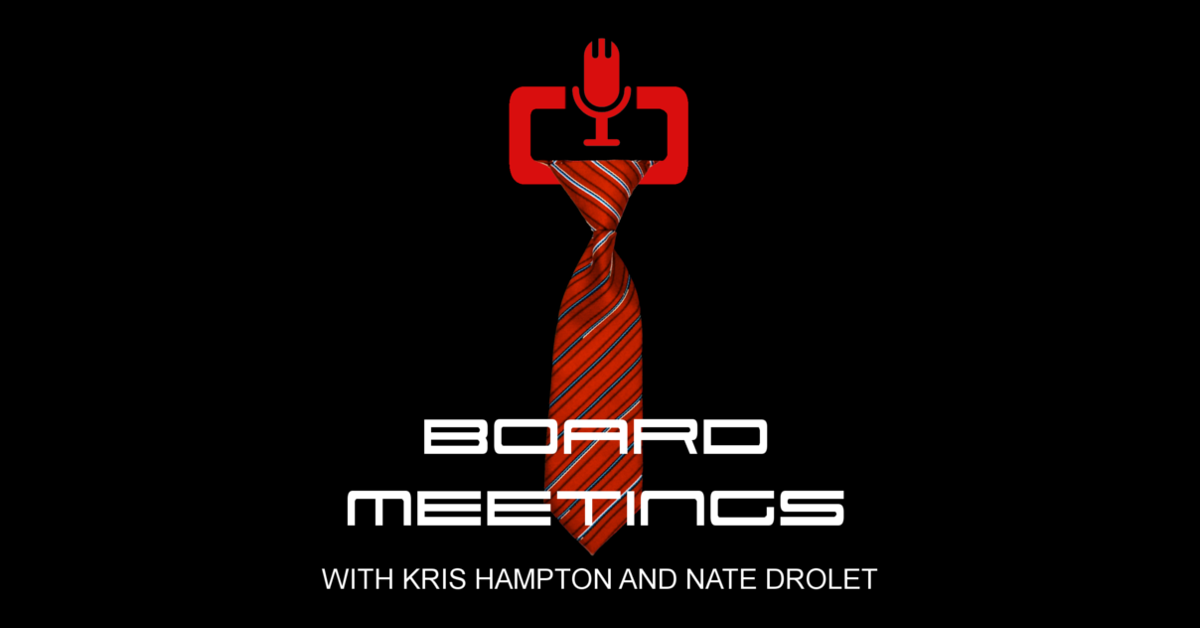




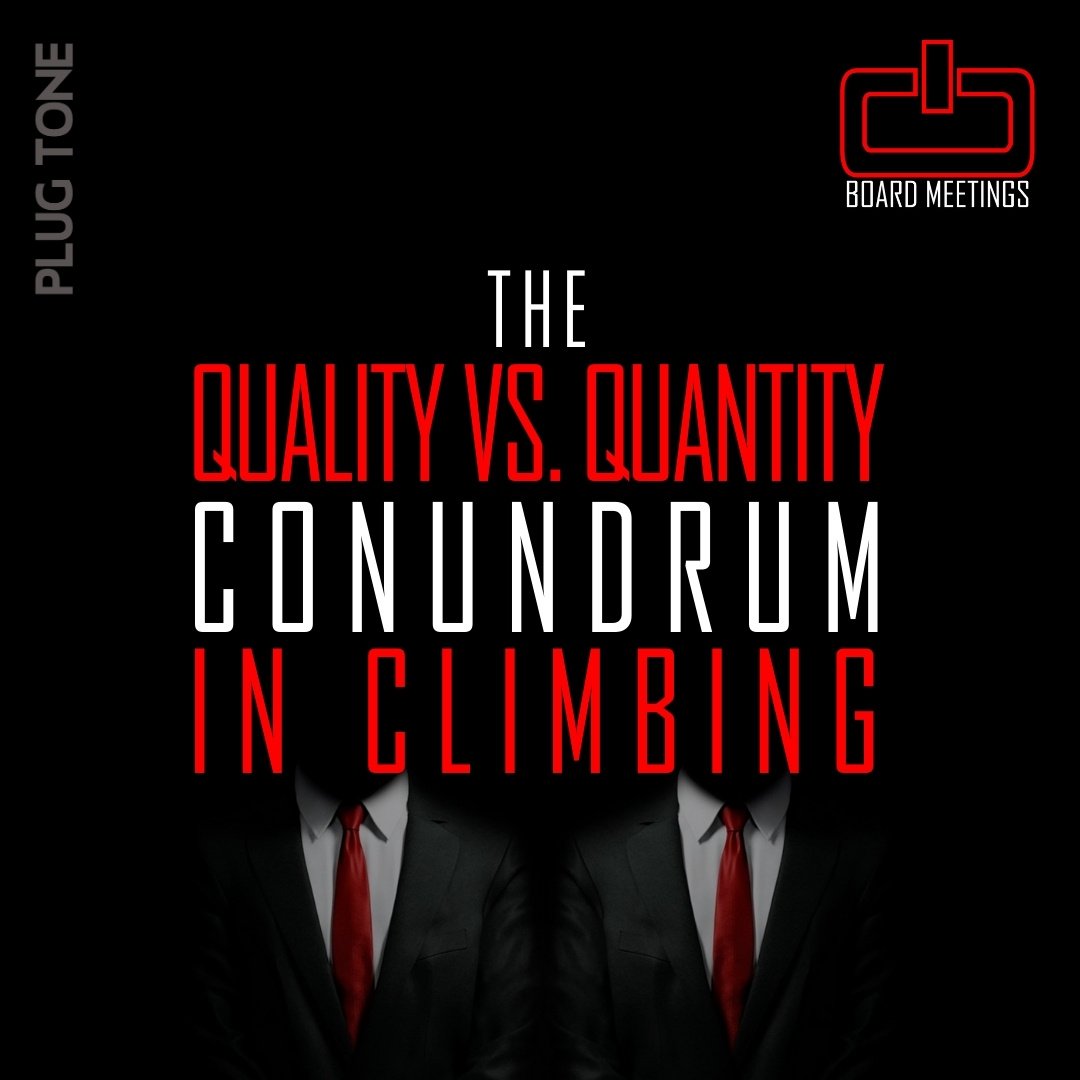
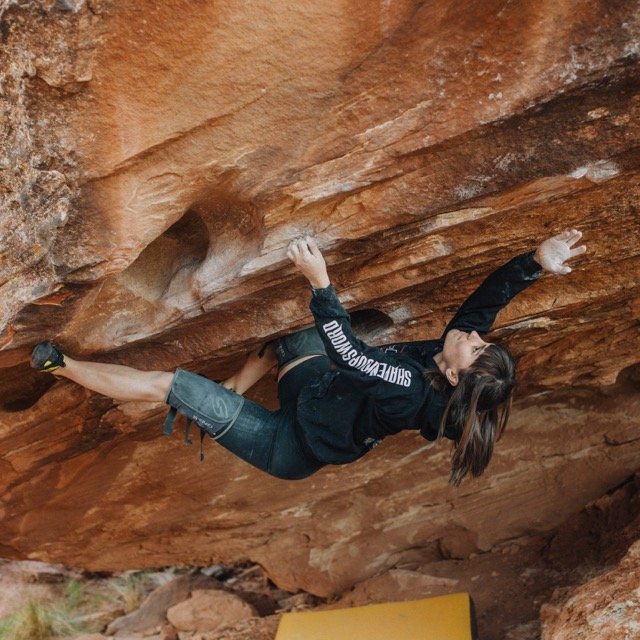

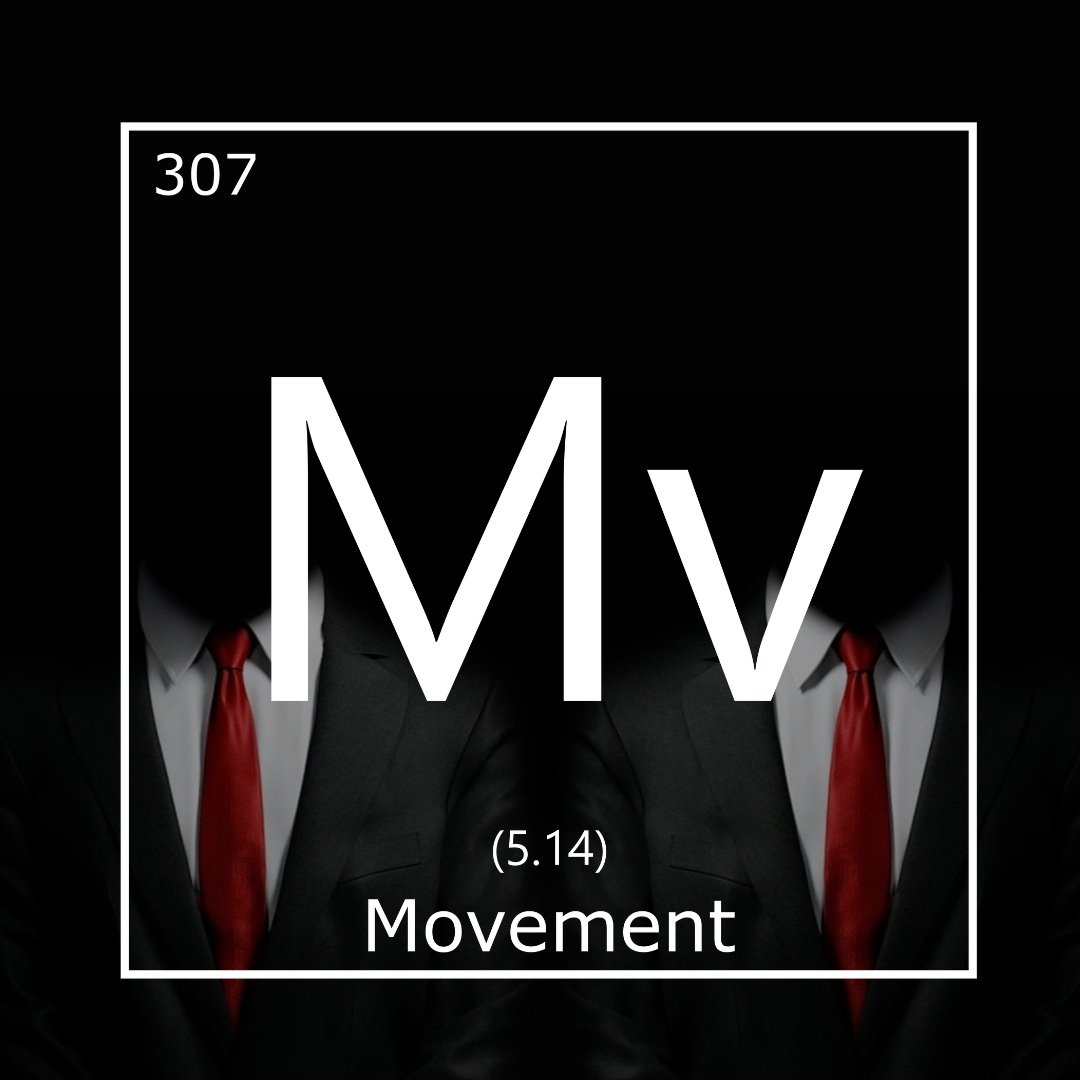
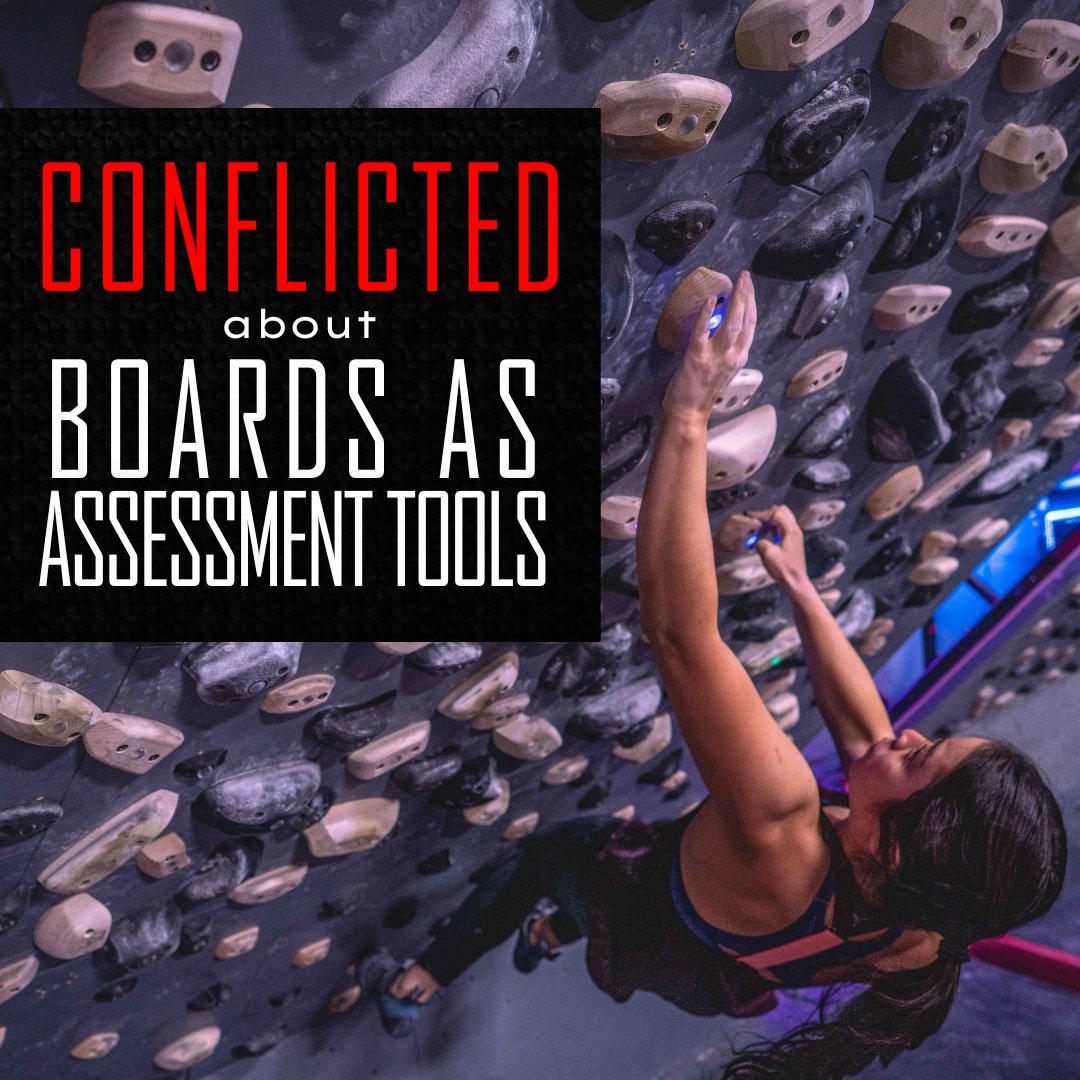
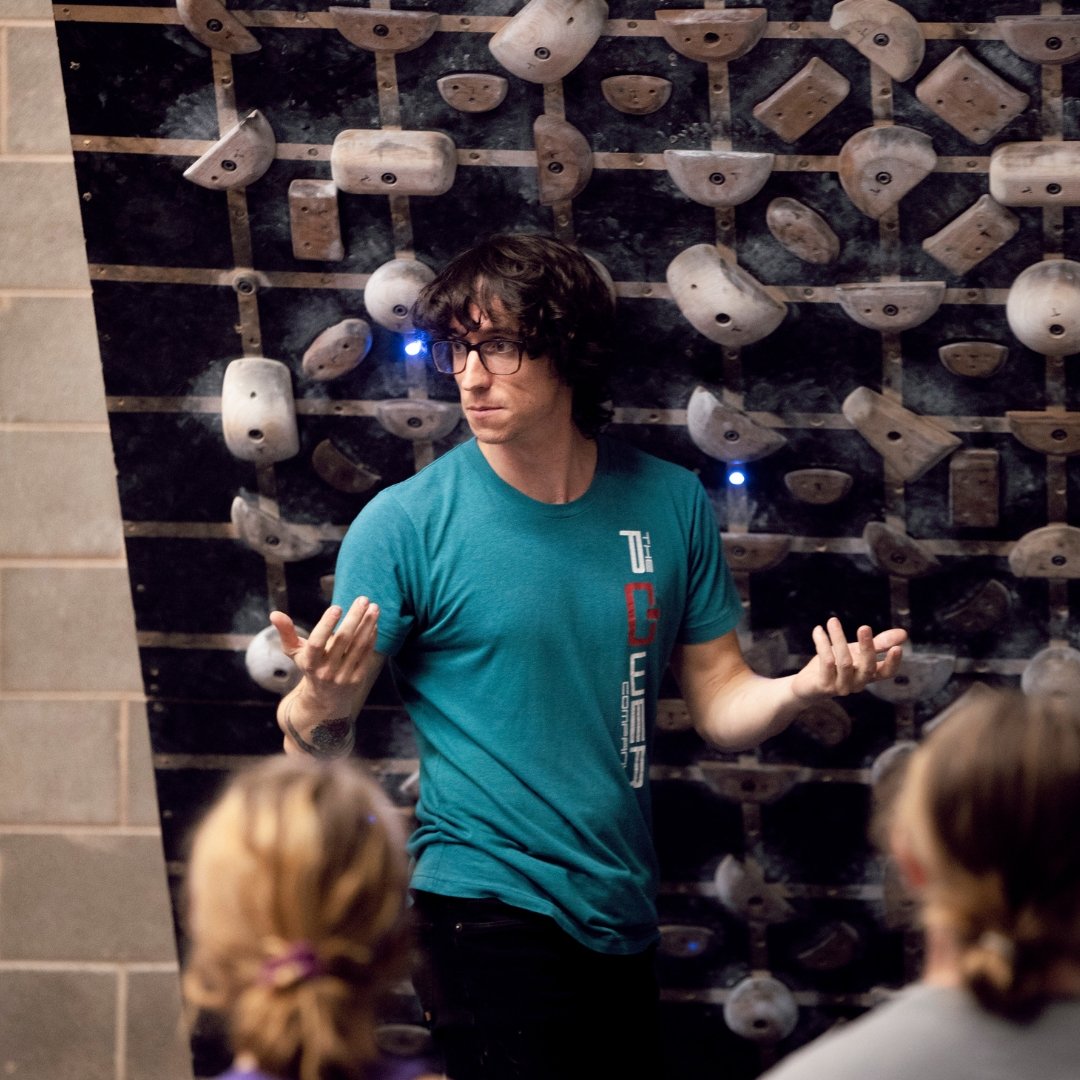
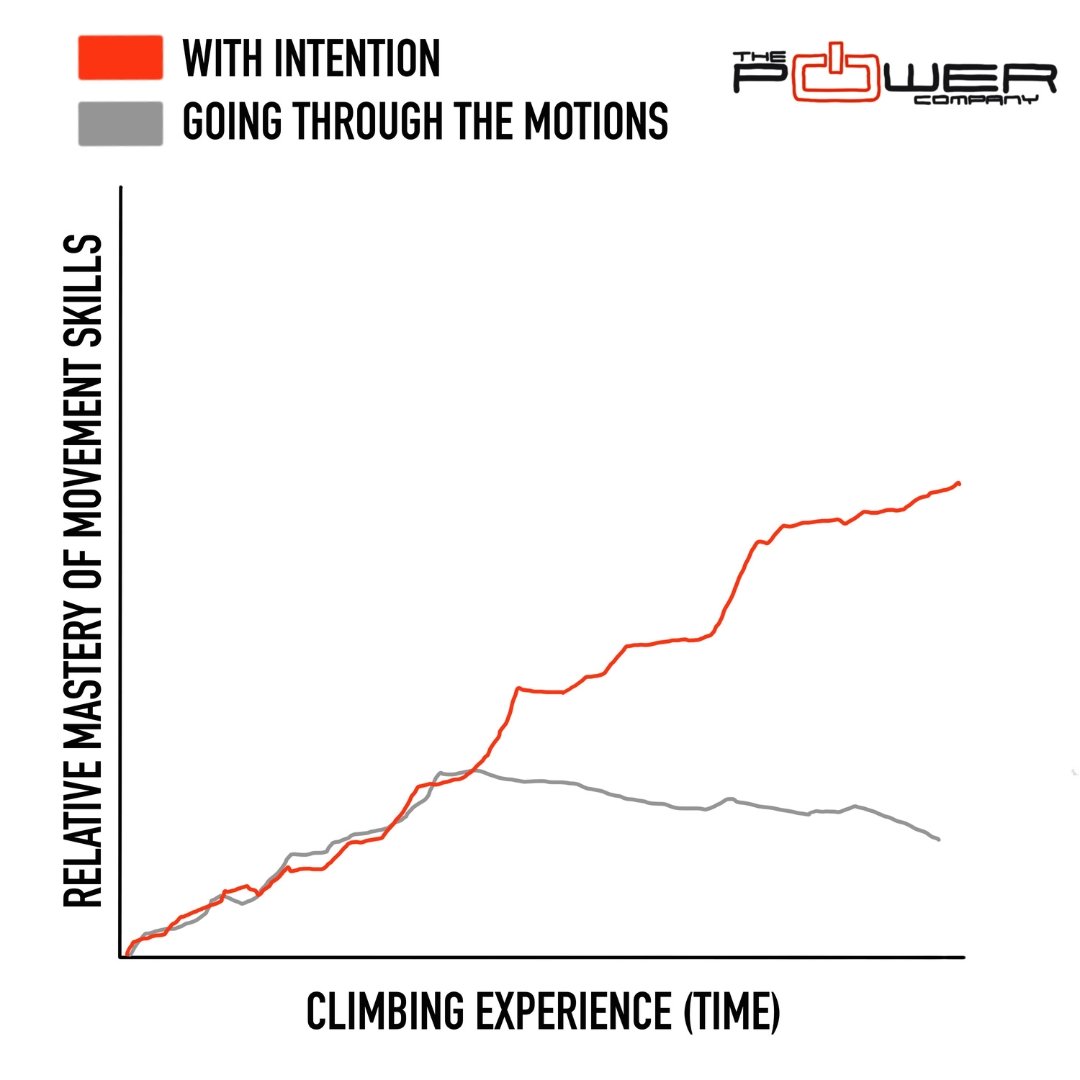


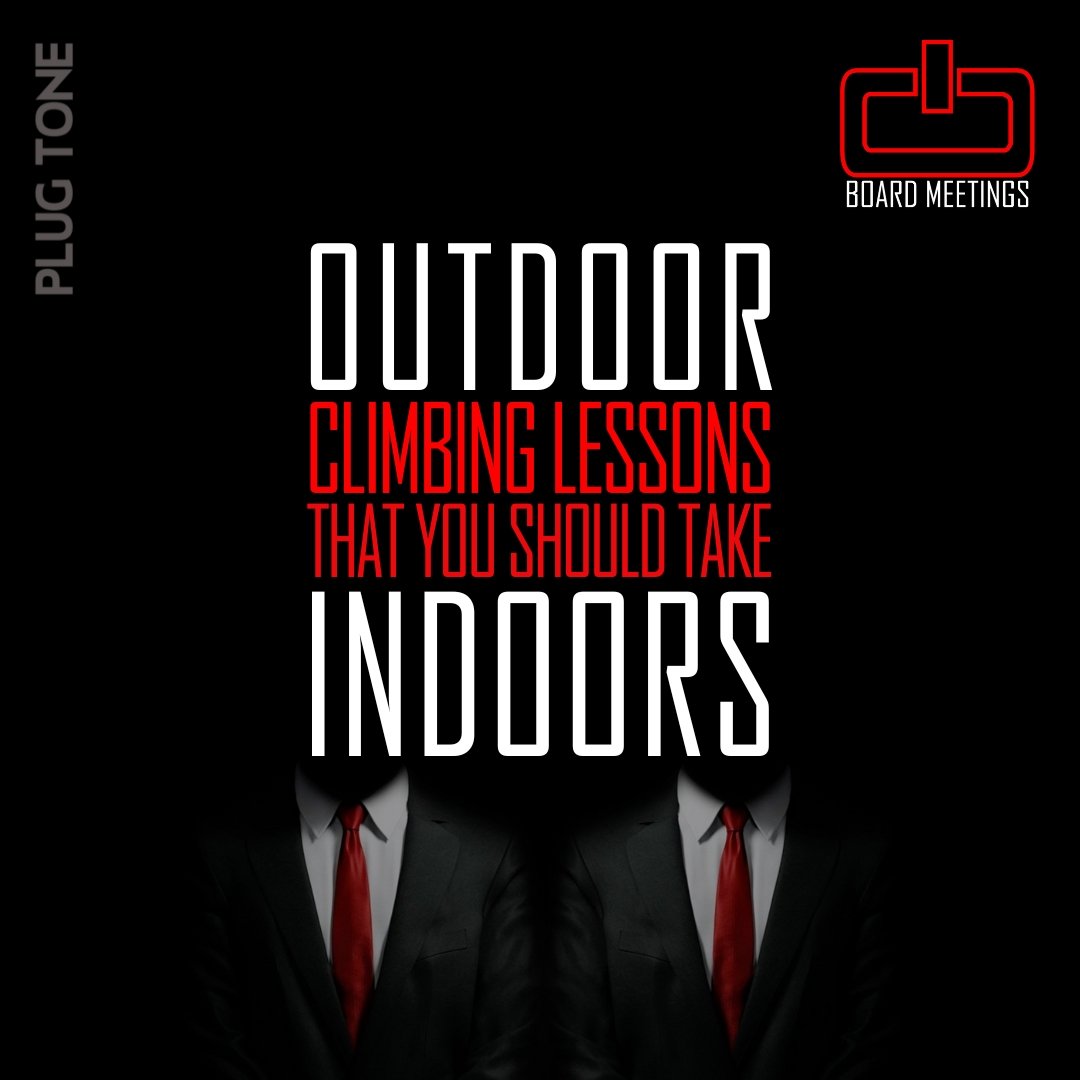

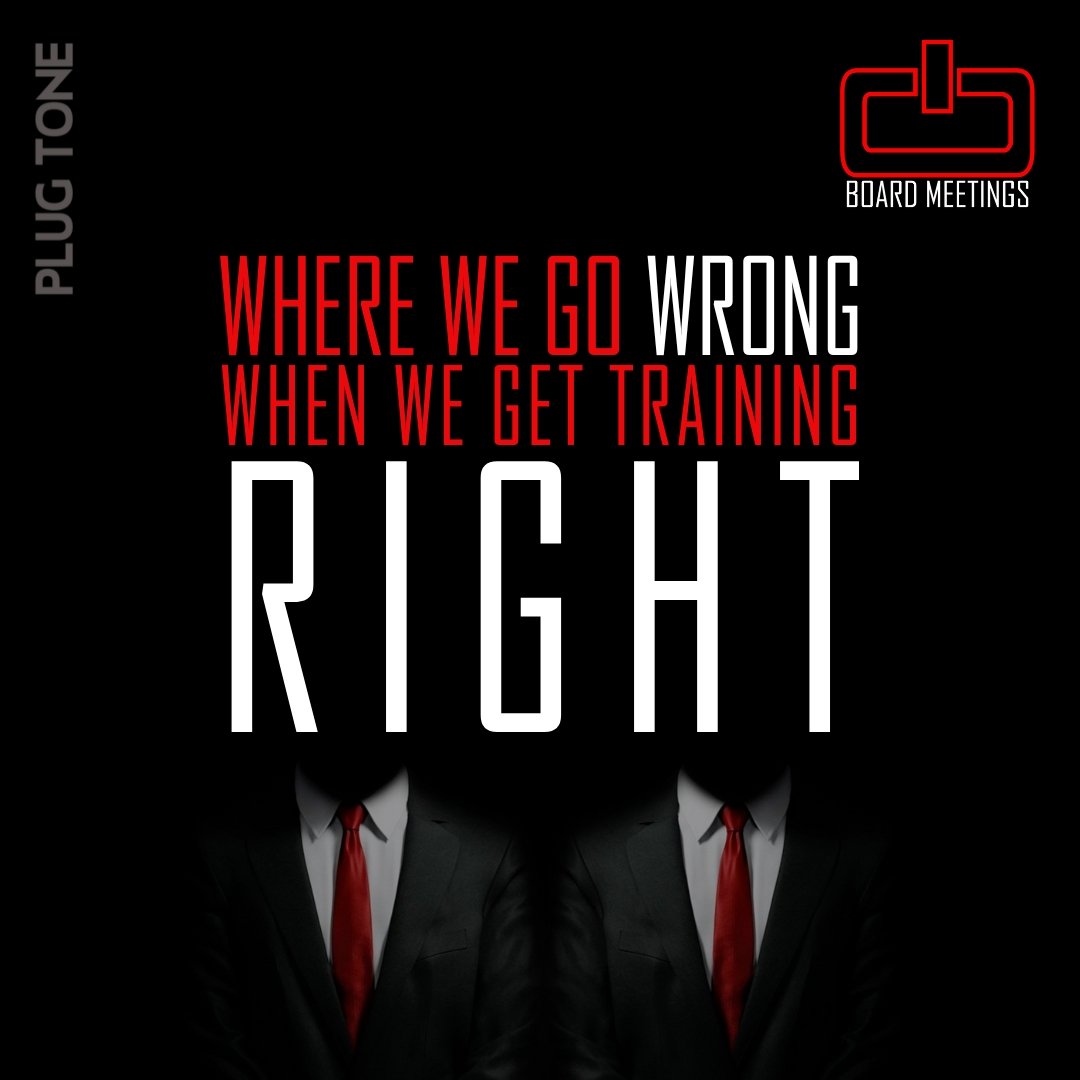




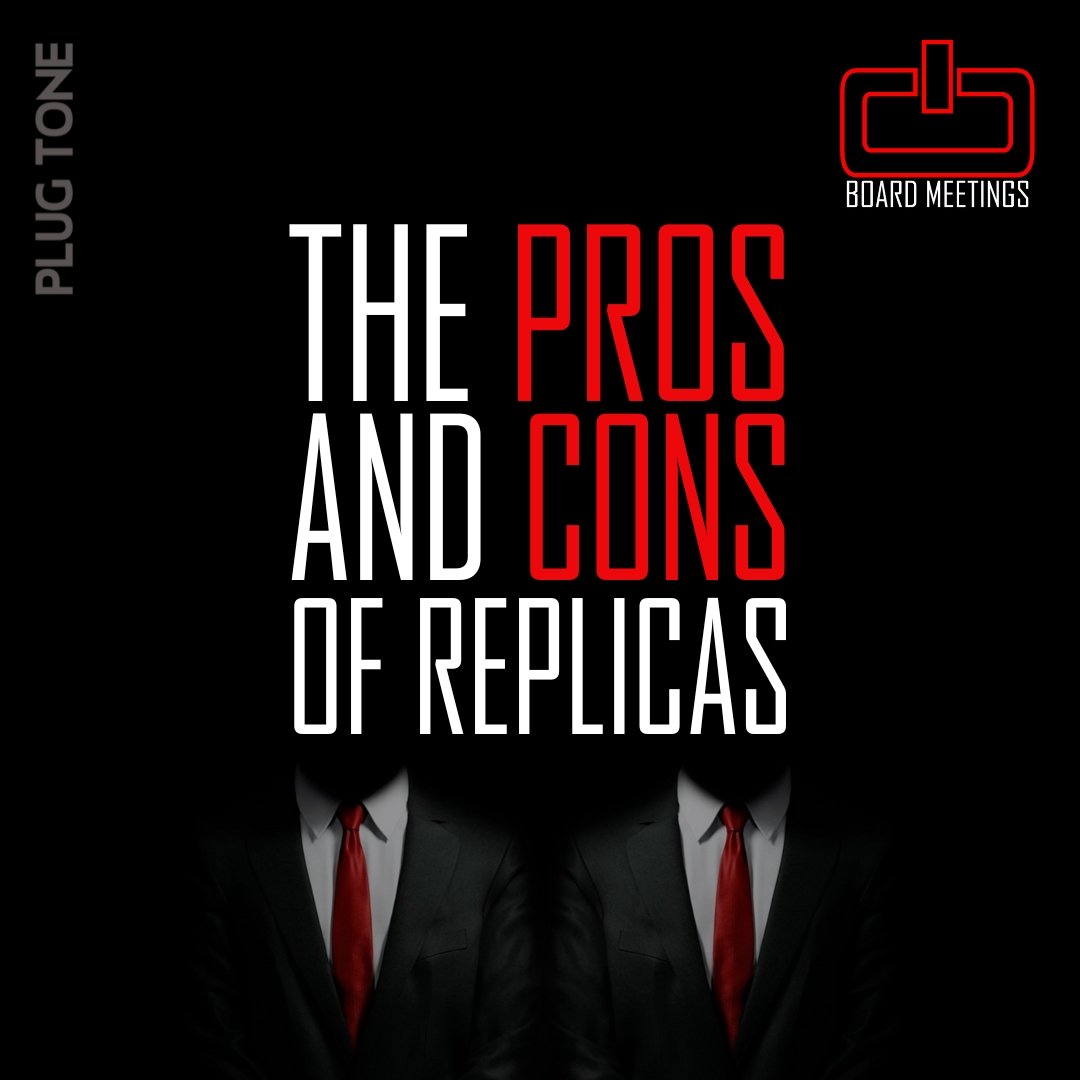
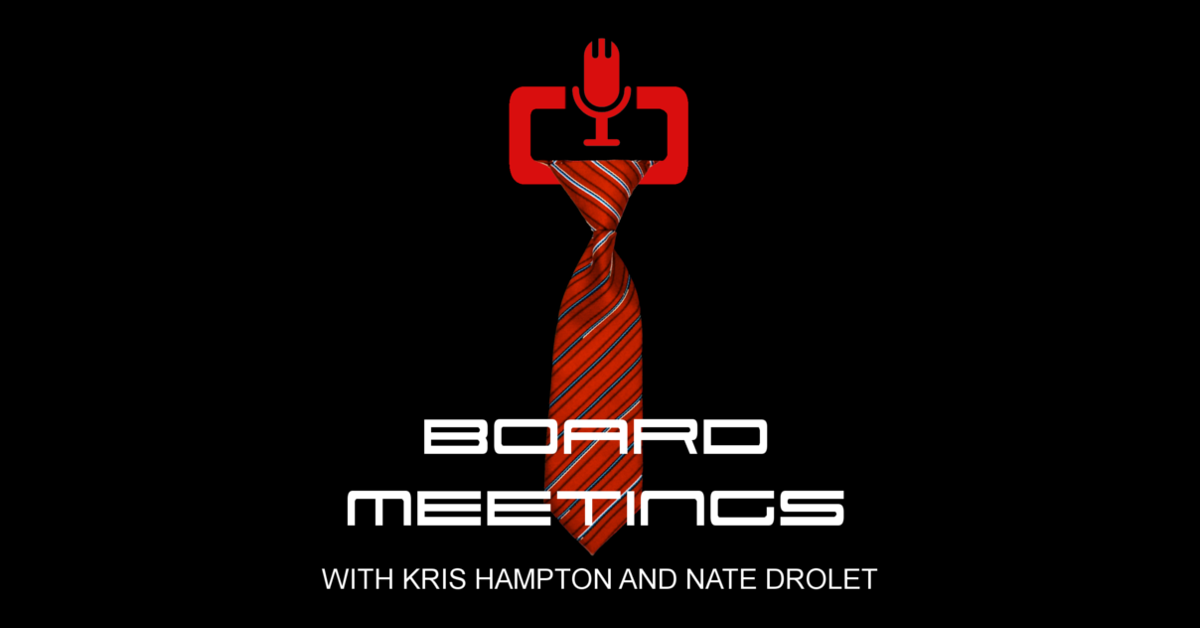







How do you know which is right for your situation?